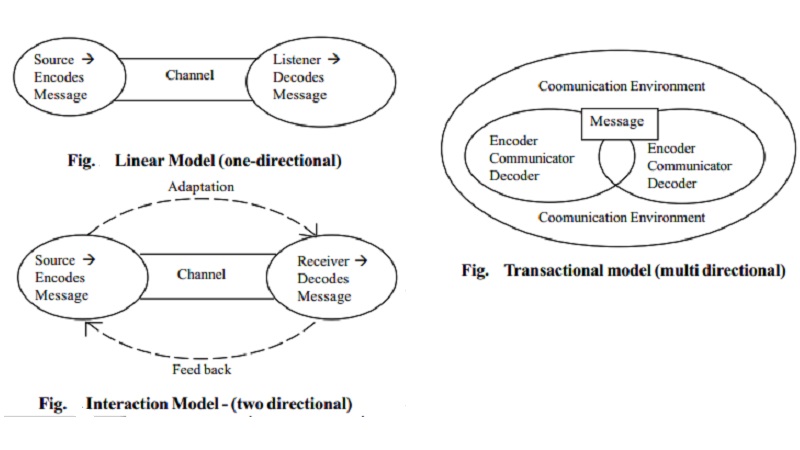Chapter: 11th 12th std standard Home Science Maintain Basic Knowledge for family life Higher secondary school College
Communication models

THE UNIQUENESS OF HUMAN COMMUNICATION
Among animals, human beings are unique. Human beings may be the only
animals that can selectively communicate. Only human beings can think in
abstractions, plan events in the future, and store and recall information. We
can express emotions, describe events and objects and combine sounds into complicated
structure.
People have an open language system while most animals have closed language system. People, because they have developed many sounds and have the ability to combine
these sounds into various words, symbols with defined meanings, can combine the
sounds to create meaningful units. We communicate through our primary signal
systems, the senses. We see, hear, taste and touch.
Human communication involves the development of relationship among
people that results in the encoding and decoding of messages. This relationship
incorporates a message, communicator/
source, channel(s), communicator/
receiver, feed back, noise and environment.
COMMUNICATION MODELS
Communication models help us to see the
components of communication .
1. The linear model - According to this a speaker encodes a message and sends it to a listener through one or more of the
sensory channels. The listener then receives and decodes the message. This is
just a speaker / listener model and is called a one - way communication.
2. Interaction Model - In this model of communication, the source encodes a message and sends it to the receiver through one or more
of the sensory channels. The receiver then decodes the message received. The
receiver then encodes feed back (a reaction) and sends the feed back to the
source, thus making it a two-way process.
3.
Transactional Model - In this model encoding and decoding of the message and feed back is
happening continuously or simultaneously and so one person is not labeled as
the source and the other as the receiver. Both communicators assume sender and
receiver roles in the transaction.
Feedback - is a message sent to the original communicator / source to reflect how the message has been perceived. This
feedback can be verbal or non verbal.
The models discussed above use the very basic ones. Whatever may be the
communication process there is always a lot of disturbance called 'noise' or
distortion. This affects the communication process.
Related Topics